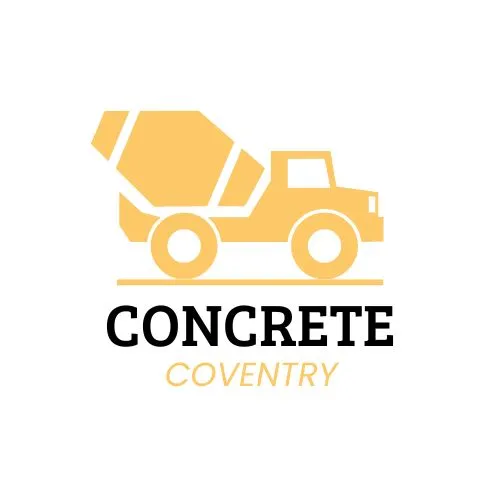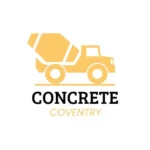A concrete screed is a vital layer applied over a concrete base to create a smooth, level surface for flooring installations. It is typically made from cement, sand, and water, with variations depending on the project.
Concrete screeds feature thickness variability, self-leveling, fast drying, and strong bonding. These qualities ensure a durable, even foundation for different flooring types.
Want to learn about concrete screeds and their benefits? We’ll cover the key details, applications, and advantages of flooring projects in Coventry, RI.
Beneficial Properties of Concrete Screed
Concrete screed is an essential component in construction, providing a smooth, level surface for flooring installations. Its unique properties make it a preferred choice for various projects, from residential homes to commercial buildings. ConcreteContractors02816 shares some key benefits of using concrete screed:
Thickness Variability
Thickness variability is a key characteristic of concrete screeds, and it plays an important role in the overall performance and suitability of the material. Concrete screeds are available in various thicknesses, typically ranging from 25mm to 100mm, based on specific needs. For self-leveling screeds, the thickness may be as little as 3mm to 10mm.
Choosing the correct thickness ensures the screed can adequately support the flooring, offering enhanced durability, thermal insulation, and soundproofing. This adaptability makes it a versatile solution for a wide variety of applications.
Composition
Concrete screed is composed primarily of cement, sand, and water, with the specific mix ratio affecting its strength, consistency, and drying time. Achieving the right balance ensures the screed remains workable while providing the necessary durability.
In certain cases, additional materials like fibers or polymers are incorporated to enhance specific properties, such as crack resistance or flexibility. For example, self-leveling screeds may include finer aggregates to create a smoother, more even surface. The ability to adjust the composition based on the project requirements makes screed an adaptable material for various flooring and construction applications.
Self-leveling
Self-leveling screeds are designed to flow naturally and level themselves once poured. This characteristic eliminates manual smoothing, making them ideal for creating smooth and even floors. The screed spreads across uneven subfloors, filling low areas and ensuring an even surface.
Self-leveling screeds are especially advantageous for large areas, as they minimize labor time and deliver a uniform finish. They are often used in residential and commercial settings where speed, efficiency, and a flawless finish are required. This property also makes them suitable for floors with minor imperfections or undulations.
Durability
Durability is one of the key advantages of concrete screeds. They are designed to withstand heavy foot traffic, impact, and the stress of daily use, making them ideal for residential and commercial applications. Once cured, screed concrete forms a solid, long-lasting surface that resists wear and tear, reducing the need for frequent repairs or replacements.
Screeds can also withstand varying temperature fluctuations and environmental conditions, adding to their longevity. They maintain structural integrity over time. It makes them an ideal and reliable choice for areas with heavy foot traffic or machinery, such as retail spaces and industrial floors. Their durability ensures they can withstand constant use, providing a long-lasting foundation for these high-demand environments.
Fast Drying
Many types of concrete screeds are engineered for fast drying, which is beneficial in time-sensitive construction projects. These screeds generally dry within 24 to 48 hours, enabling workers to proceed with the afterward tasks more quickly. The faster drying time minimizes downtime and accelerates project timelines, which is crucial for projects that require quick turnover, such as renovations or commercial spaces.
This property also allows for faster installation of flooring materials, reducing waiting times. Fast-drying screeds are ideal for environments where construction schedules are tight, helping to maintain progress and efficiency throughout the project.
Bonding
Concrete screeds can bond directly to an existing concrete substrate, creating a strong and seamless connection between the two surfaces. This bond ensures the screed remains stable and secure, even under heavy loads. Screed bonds directly to existing floors, reducing the need for extensive preparation, labor, and materials, making it a cost-effective solution.
Additionally, the bond prevents movement and cracking, ensuring the long-term stability of the screed. Proper bonding is crucial for maintaining the durability and integrity of the floor, ensuring it functions as intended without separating from the base layer.
Thermal Properties
Concrete screeds are excellent conductors of heat, making them ideal for underfloor heating systems. The screed distributes heat evenly across the floor, ensuring a comfortable and energy-efficient environment. This characteristic helps maintain consistent room temperatures and reduces the reliance on traditional heating methods, leading to energy savings.
The ability of the screed to retain and transfer heat makes it an essential element in sustainable building designs. Whether in residential homes or commercial spaces, thermal properties enhance comfort and improve energy efficiency, ensuring that floors are functional and sustainable.
Application Methods
Concrete screed is applied in various ways based on the scale and complexity of the project. Manual application with a trowel or float provides precise control for smaller areas. Larger projects, however, often require machines such as pumps or mixers to handle the material more efficiently.
Screed machines are available for projects where speed and precision are needed. The application method will depend on the size of the project, the required finish, and the available equipment. Choosing the proper method ensures a smooth, level surface and reduces labor time for installation.
Versatility
Concrete screeds are highly adaptable and suitable for a wide range of applications, including both residential and industrial environments. They are appropriate for creating smooth, properly level surfaces in different environments, including homes, offices, and warehouses.
Screeds can be customized with additives to meet specific needs, such as improving crack resistance or enabling self-leveling properties. Whether used as a base for tiles, carpet, or hardwood flooring, screeds provide a stable foundation. The adaptability of screed makes it a go-to solution for flooring, heating systems, and other construction needs, ensuring flexibility across different projects.
Conclusion
Concrete screed is an exceptionally versatile and durable material for modern construction projects. With adjustable thickness, self-leveling properties, and fast drying, it creates smooth, stable surfaces in residential and commercial spaces. Concrete screed is a valuable asset for builders and homeowners, delivering high-quality, durable results.
If you’re looking for high-quality screed solutions, we’re here to help. We are ready to provide top-quality screeding services, ensuring outstanding results every time. Contact us today.
Frequently Asked Questions
How thick should a concrete screed be?
Concrete screeds generally range from 25 mm to 75 mm in thickness. The required thickness depends on the type of project and the subfloor conditions.
How long does it take for the concrete screed to dry?
Drying time for concrete screed varies, but some types can dry within 24 to 48 hours, allowing for faster project completion. However, full curing may take longer, depending on conditions.
What is the difference between a concrete screed and a concrete slab?
A concrete screed is a thin layer applied over a subfloor to create a level surface, whereas a concrete slab is a thicker structural component used for foundations or flooring.
Can concrete screed be used for underfloor heating systems?
Concrete screed is ideal for underfloor heating systems as it efficiently conducts and distributes heat, improving energy efficiency and comfort in buildings.
How do you apply concrete screed?
Concrete screed can be applied manually using a trowel or with specialized machines, depending on the project size. The application method varies based on the scale of the project.

